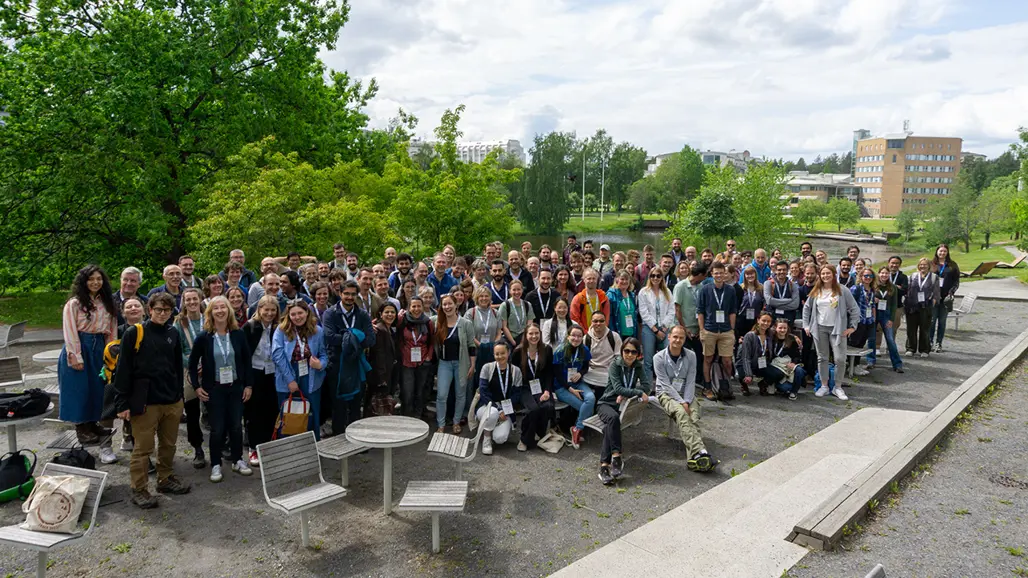
Tree rings build cross-disciplinary bridges at TRACE 2025 in Umeå
From 15 to 20 June, tree rings were in focus in Umeå during the international TRACE 2025 conference. Around 150 researchers and students from archaeology, climatology and ecology gathered to exchange knowledge and methodologies for tree ring analysis while enjoying the long Swedish summer days.
What was the climate like in the past, and what can we learn from the timber used in old buildings and ships? How do factors such as pollution, drought or cold weather influence tree growth and how might this help us understand how trees will cope with future climate conditions? These were just some of the questions explored during the conference. What united researchers from these diverse disciplines was a shared interest: the science of tree rings.
As trees grow, they form a new layer of wood each year. These layers appear as rings in a cross-section of the trunk and can reveal a wealth of information. Wide rings often indicate years of good growth, while narrow rings may point to drought, cold or other environmental stress. By studying these patterns, scientists can reconstruct past climates, date historical structures such as buildings or wooden ships and even track pollution levels over time, all summarized under the field dendrochronology.
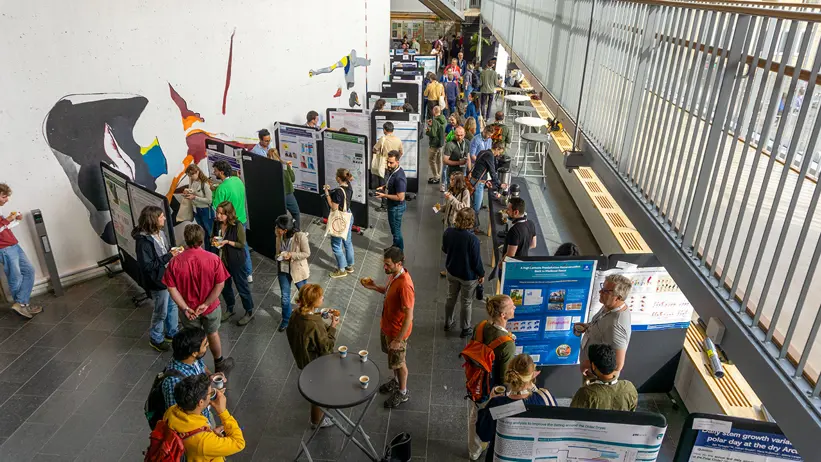
From ancient villages to tree growth along railway tracks
“In my group, we are using tree rings to understand how conifer trees adapt to their environment which can help predict how they might respond to climate change. We want to know how much of a tree’s growth depends on its genes and how much is shaped by the conditions it experiences”, says Kelly Swarts, whose group organised this year’s TRACE conference in Umeå. “We combine growth data derived from tree rings and environmental data such as temperature or rainfall with genetic data of individual trees to model their environmental responses.
TRACE stands for “Tree Rings in Archaeology, Climatology and Ecology” and is the annual meeting of the Association for Tree-Ring Research. The topics at the conference ranged from ecosystem studies and species’ climate sensitivity to wood anatomy and chemistry, climate reconstruction and dendroarchaeology. Tree rings were used for example to date high-elevation mountain villages in the Caucasus region of Georgia, monitor arsenic pollution in mining areas and assess tree health along railway tracks in Germany
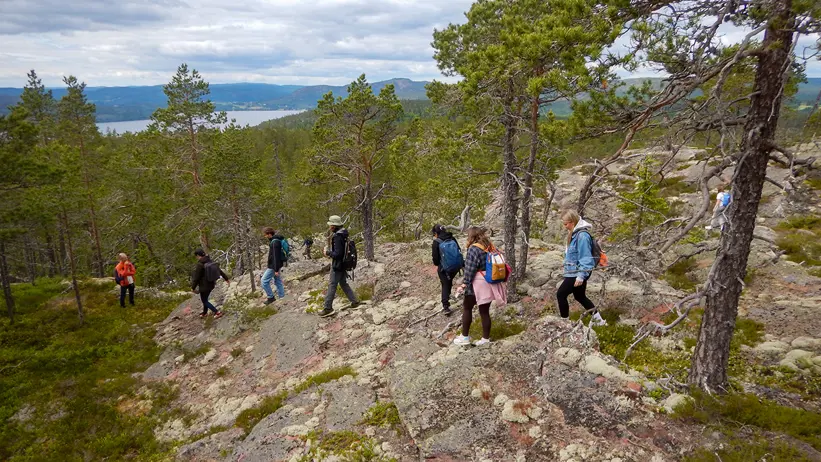
Monitoring tree growth without harming the tree
The conference aims to build bridges between the different disciplines that all analyse tree rings to answer their research questions. Researchers typically work with core increments, pencil-sized wood samples taken using a special borer from the trunk of the tree or from planks or old wooden frames. This technique does not harm the tree as shown in several studies. In fact, when the borer is removed, the hole begins to fill with resin almost immediately. It is best to not seal the hole but to let the tree heal naturally as pointed out by one of the participants.
“We all use similar methods to analyse tree rings, and the conference is a great opportunity to network and exchange methodologies”, says Kelly Swarts who joined Umeå Plant Science Centre and the Swedish University of Agricultural Sciences in 2023. “This year we discovered another group using the same sampling method as us but focusing on different research questions. We hope to collaborate more closely in the future and share resources. That would be a great asset.”
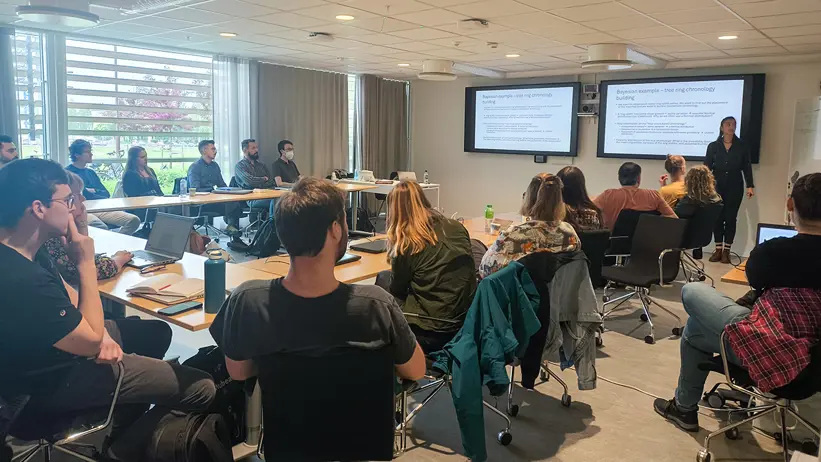
Fostering the next generation of tree ring researchers
The Association for Tree-Ring Research places a strong emphasis on supporting early-career researchers, including students. Each year, it awards prizes for the best Master’s and PhD theses in the field as well as for the best oral and poster presentations at the conference. This year Vasilina Akulova, a PhD student in Kelly Swarts’ group, received the prize for the best talk. The evaluation committee especially praised her ability to clearly explain a topic unfamiliar to many participants in a way that was easily understandable for everyone.
“That was completely unexpected. I knew that my research overlaps with the tree rings and ecology topics but mainly focuses on the genetic aspect. It felt nice sharing my passion with people and being acknowledged for the presentation”, says Vasilina Akulova. “TRACE conferences are super interdisciplinary and stimulate collaboration and I love how the association supports the young researchers. It is great to be a part of this community. Organising TRACE was a huge effort with lots of people involved - especially Kelly, who played a major role. I am thankful to all the organizers, sponsors and participants for making it happen.”
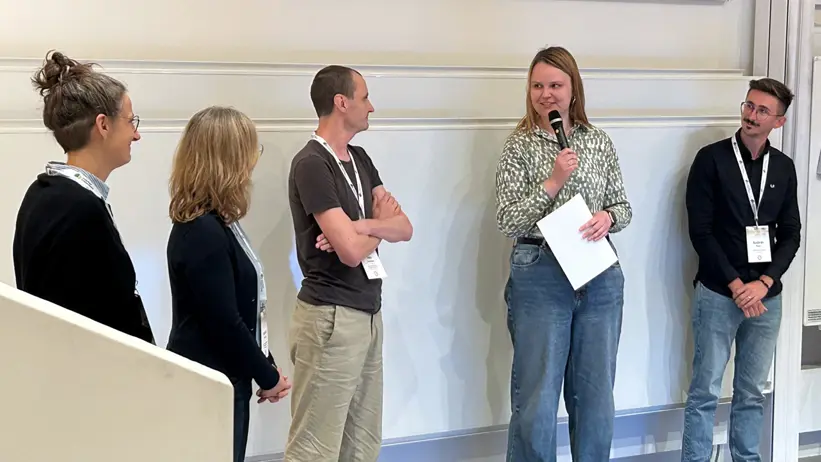
In addition to scientific talks and poster presentations, the conference programme included several pre-conference workshops and excursions to the Swedish Tree Breeding Institute in Sävar and the Västerbotten museum in Umeå. The event concluded on the 20th of June with the prize ceremony. Participants who chose to stay longer could join a post-conference trip to the old-growth forests of the High Coast region or celebrate traditional Swedish Midsummer at the Västerbotten Museum.
More information about TRACE 2025
Link to the homepage of the Association for Tree-Ring Research
Tree rings and dendrochronology
Each tree ring typically consists of two layers: a lighter, thicker one and a darker, thinner one. The light layer forms in spring and summer when the tree is actively growing. As autumn approaches, growth slows and eventually stops during winter, which is reflected in the formation of the darker layer. The width of a tree ring is influenced by climate conditions. In hot, dry years, rings tend to be narrower, while in wetter years, they are usually wider. Cold winters can also affect ring width, often resulting in thinner growth.
The scientific study of annual growth rings in trees is called dendrochronology. It is used to date and analyse past events and environmental conditions. Researchers apply dendrochronology to reconstruct historical climate patterns, date wooden structures and artefacts - such as the Vasa ship exhibited in Stockholm -, understand forest dynamics and how trees respond to environmental stress, and investigate natural events like volcanic eruptions or earthquakes. It is also used to monitor pollution, for example, following the Chernobyl disaster.
Contact
-
PersonKelly SwartsDepartment of Forest Genetics and Plant Physiology